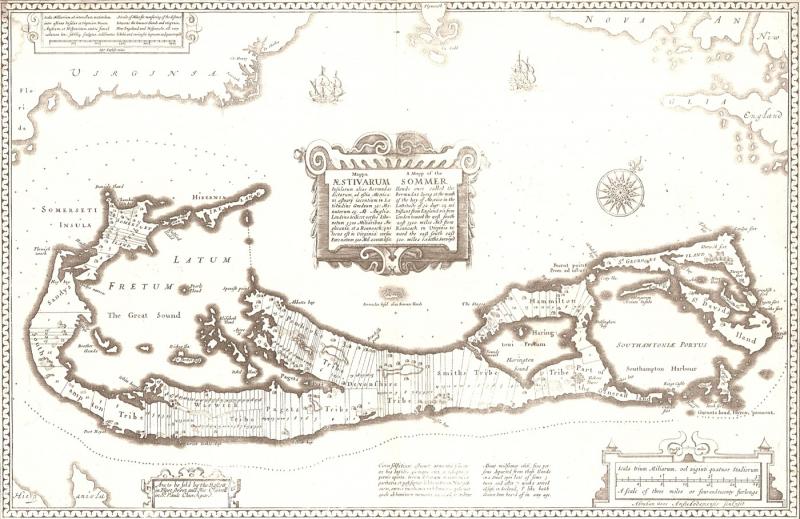John Speed's 1676 map of Bermuda
John Speed's 1676 map of Bermuda, then called the Somers Isles. Speed's explanation at the center of the map reads: A Mapp of the Sommer Ilands once called the Bermudas Lying at the mouth of the bay of Mexico in the Lattitude of 32 degr: 25 mi: Distant from England viz from London toward the west south- west 3300 miles And from Roanoack in Virginia to- ward the east south east 500 miles exactlie surveyed. The map uses a different scale for the landmass of Bermuda and the Atlantic Ocean surrounding it; as a result, Virginia, New England, and Hispaniola appear much closer to the island than they are. A close view reveals that the land was divided into eight areas called "tribes." According to Virginia Bernhard's article "Bermuda and Virginia in the Seventeenth Century: A Comparative View" in the Journal of Social History, the land was divided by the Somers Islands Company in 1615, and each tribe contained about 1250 acres. "Land ownership was restricted by law to 250 acres, or ten shards, as the 25-acre allotments were called, for each individual in a given tribe."

Public Domain
Public Domain is a copyright term that is often used when talking about copyright for creative works. Under U.S. copyright law, individual items that are in the public domain are items that are no longer protected by copyright law. This means that you do not need to request permission to re-use, re-publish or even change a copy of the item. Items enter the public domain under U.S. copyright law for a number of reasons: the original copyright may have expired; the item was created by the U.S. Federal Government or other governmental entity that views the things it creates as in the public domain; the work was never protected by copyright for some other reason related to how it was produced (for example, it was a speech that wasn't written down or recorded); or the work doesn't have enough originality to make it eligible for copyright protection.